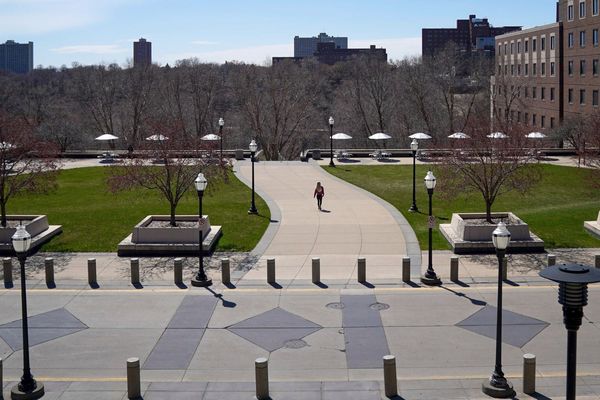
Cover your fences and garden walls with plants and let weeds grow in your patio to help wildlife beat the heat, a top wildlife gardener has said.
Prolonged dry, hot weather, which is increasing due to climate breakdown, has devastating effects on birds, insects and other garden creatures.
Kate Bradbury, a presenter on BBC Springwatch who specialises in nature-friendly gardening, is working on a garden at the Hampton Court flower show next month.
With the garden designer Jo Thompson, she has created a space that includes a bog garden for dragonflies and is full of many native plants as well as drought-tolerant species such as buddleia.
“In gardens we have a responsibility now. We see species that are struggling and we need to step up and help them,” said Bradbury.

“Hedgehogs are filling up rescue centres when it’s dry. They are starving and dehydrated. I had robins nesting in my garden a few weeks ago. The parents were taking sunflower hearts and dipping them in the bird bath to feed their young; the ground was baked and they couldn’t peck at it to get insects. I ended up rehydrating mealworms for them as I was worried the young wouldn’t fledge – all five ended up fledging.”
The best thing anyone can do is cover their garden in a diverse range of plants, Bradbury said. This is because “plants have a cooling effect”.
“If you touch leaves on a hot summer’s day they are often cool to touch. Similarly if you step into woodland in summer, the woodland is cooler than outside. This means we must grow more plants, cover every space with plants. Let weeds grow in your patio so it takes the temperature down, if you have a fence or a wall, put climbers up it, put plants on every surface.”

The current trend for minimalistic, paved gardens and artificial turf is particularly problematic.
Bradbury said: “Hard surfaces absorb more heat. They make the local environment hotter which is not pleasant for us and terrible for wildlife. Plastic grass leaches chemicals into the environment and is toxic. We have 22m gardens in the UK. If we cover them all in plastic grass and paving, the landscape will become hot, dry, lifeless and unpleasant. But if they are all full of plants we could have a really vibrant living landscape.”
Last year, many were tempted to replace their garden plants with hardy, drought-proof varieties from the Mediterranean after a summer of intense heat and lack of rainfall.
However, Bradbury said there should still be native plants in the garden. “Native plants are really good for loads of native egg-laying species. In the garden at Hampton there are loads of hawthorns and elder and these are really good caterpillar food plants for species of moths. If we replace all our plants with those from the Med the moths will have nowhere to lay their eggs. Mediterranean herbs that are near-native – lavender, for example – are better for our native insects than things from North America or the southern hemisphere. We should be growing a mixture.”

Ultimately, the most important thing you can do in the garden is increase the water in it, she said, whether that is by building a pond or a bog, or by leaving dishes of water out for birds, mammals and insects. People should using “grey water” such as water from the bath or washing-up bowl to water plants. “Not many people know this but plants produce less nectar in a drought, so one of the most important things we can do is water plants so they can produce nectar.”
Help in the heat: wildlife garden tips from the RHS
Plant or train climbers up walls and fences to provide shade cover for smaller wildlife. This also helps to cool our homes.
Delay cutting back overgrown shrubs or trees to winter – at this time of year their full canopies create welcome shade for animals and are also home to nesting birds which are protected by law from disturbance.
Invest in a rain butt to take advantage of the rains when they come.
Hard surfaces get very hot during a heatwave, making them no-go zones for wildlife, so replace as much as possible with softer surfaces and planting. You only need a couple of strips of hard surface, where the wheels run, to park a car so why not lift up the paving or break through the tarmac either side and plant with low-growing thyme, thrift and chives (all tolerant of heat and loved by pollinating insects).
Earthworms, which are food for many creatures – badgers, hedgehogs, frogs and toads, blackbirds and starlings – go deeper into the soil when conditions are too dry, making them hard to reach, so mulch borders with garden compost and allow some patches of lawn to grow long to help the soil to dry more slowly.
• The Hampton Court flower show runs from 4-9 July







